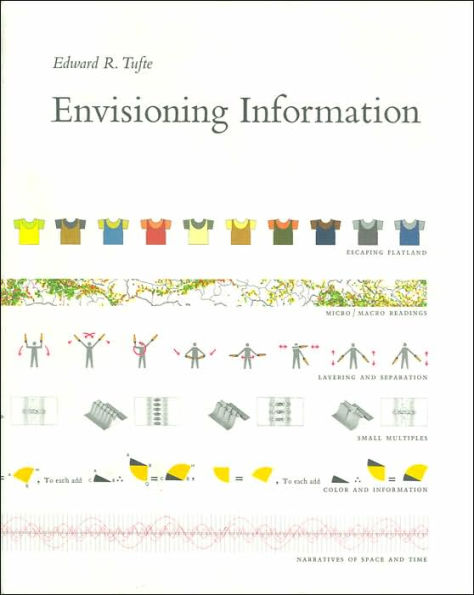The world is complex, dynamic, multidimensional; the paper is static, flat. How are we to represent the rich visual world of experience and measurement on mere flatland?
This book celebrates escapes from flatland, rendering several hundred superb displays of complex data. Revealed here are design strategies for enhancing the dimensionality and density of portrayals of information techniques exemplified in maps, the manuscripts of Galileo, timetables, notation describing dance movements, aerial photographs, the Vietnam Veterans Memorial, electrocardiograms, drawings of Calder and Klee, computer visualizations, and a textbook of Euclid's geometry.
Our investigation yields general principles that have specific visual consequences, governing the design, editing, analysis, and critique of data representations. These principles help to identify and to explain design excellence--why some displays are better than others.
Charts, diagrams, graphs, tables, guides, instructions, directories, and maps comprise an enormous accumulation of material. Once described by Philip Morrison as "cognitive art," it embodies tens of trillions of images created and multiplied the world over every year. Despite the beauty and utility of the best work, design of information has engaged little critical or aesthetic notice: there is no Museum of Cognitive Art. This book could serve as a partial catalog for such a collection. Like my previous study, The Visual Display of Quantitative Information, which derives theoretical counsel from the classics of statistical graphics, this book arrays exemplary designs--this time over a broader spectrum, for all types of information.
To envisioninformation--and what bright and splendid visions can result--is to work at the intersection of image, word, number, art. The instruments are those of writing and typography, of managing large data sets and statistical analysis, of line and layout and color. And the standards of quality are those derived from visual principles that tell us how to put the right mark in the right place.
Finally, in reading the words and drawings, note that:
Many of the illustrations have been edited and redrawn (as indicated in the citations) in order to repair battered originals, to make new color separations, and to improve the design. Primary sources--the themes for my variations--are always noted.
The illustrations repay careful study. They are treasures, complex and witty, rich with meaning. The text, I do hope, is of similar character, with every word meant to count; all in all, the reader should proceed most slowly through these bountiful and condensed pages.
The principles of Information design are universal-like mathematics and are not tied to unique features of a particular language or culture. Consequently, our examples are widely distributed in space and time: illustrations come from 17 countries and 7 centuries, and, for that matter, 3 planets and 1 star.





